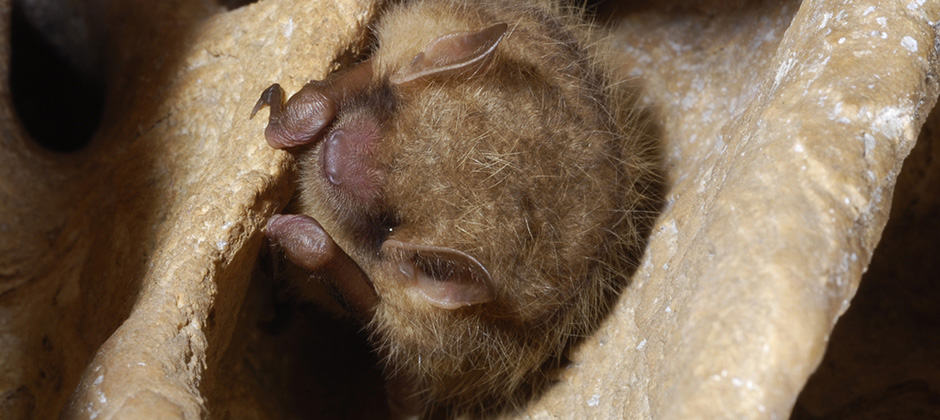Share this article
Road culverts could be a white-nose syndrome pathway
Southern Georgia doesn’t have many caves, so bats there need to find other places to hibernate. For some the solution is culverts—tunnels that channel water underneath roads.
But researchers worried those culverts might be carrying more than water. They could carry the fungus that causes white-nose syndrome, a deadly disease killing bats across much of North America. The disease has reduced bat populations in northern Georgia. Biologists worried that if the fungus, Pseudogymnoascus destructans, was showing up in southern Georgia culverts, it could spread to bat populations into Florida, where it hasn’t been detected yet.
“We wanted to know where the transmission of this pathogen might occur,” said Chris Cornelison an assistant professor of microbiology in the department of molecular and cellular biology at Kennesaw State University.
Cornelison’s master’s student Kelly Lutsch led a study published in the Journal of Wildlife Diseases where they set out to determine if these culverts could facilitate the spread of white-nose syndrome in tricolored bats (Perimyotis subflavus).
The first step was surveying culverts for bats. Lutsch drove around the area looking for culverts with standing water nearby. When she found one, she’d walk through, looking for bats. “It’s a lot of hard work to do this,” said Cornelison, the corresponding author of the study. “She’s a phenomenal student and a real trooper to put in the work, and it turned out it didn’t take long to find bats.”
Many of the culverts—about 30 to 40% of them—had bats, Lutsch found, but they weren’t always the tricolored bats the team was targeting. After inspecting the bats for white-nose and swabbing the culverts for signs of the fungus, the researchers didn’t find any trace of it. But they did notice connectivity between the culverts along the bats’ migratory route. Tricolored bats can “hopscotch” from culvert to culvert as they move roost sites from year to year, Cornelison said.
The researchers also noticed some atypical behaviors of the bats in these structures. While tricolored bats typically roost alone, the team noticed many of them were clustering together in drainage holes at the top of the culverts, where temperatures were more stable. While Georgia is generally warm, winter days can be cold. The holes helped the bats stay warm enough to maintain their torpor in hibernation, the researchers realized. But that could create a problem. If one bat infected with white-nose syndrome arrives, clustering together could spread the disease.
To test if the fungus could grow in the culverts, the team put temperature loggers where the bats were hibernating, including inside these holes. They found the temperatures in these areas were all in the optimal growth temperature for the fungus that causes white-nose syndrome. That raised concerns that, even if white-nose syndrome wasn’t there yet, it could appear.
Now, the researchers are working with the Department of Natural Resources and the Department of Transportation to prevent culverts from spreading the disease.
“Year-by-year, the fungus is being detected farther and farther south,” Cornelison said. “We know where these sites are, and we’re working to develop control measures to hopefully slow the spread.”
One approach could be to deliver antifungals to culverts—something easier to do in manmade structures than inside caves where delicate ecological systems are at play.
The team plans to continue monitoring these sites. The more culverts, they study, the more bats they find. That could make this network of manmade tunnels as important to these as caves are elsewhere, Cornelison said. “From a conservation standpoint, we need to think about how roadway project maintenance can impact species.”
The discovery gives researchers a rare chance to get out in front of white-nose syndrome, he said, and protect bats before they’re affected.
“We want to understand what’s going on before we lose them,” Cornelison said. “Once they’re gone it’s difficult to take corrective action.”
Header Image:
Roosting in culverts may facilitate the spread of white-nose syndrome in tricolored bats.
Credit: Pete Pattavina/USFWS








